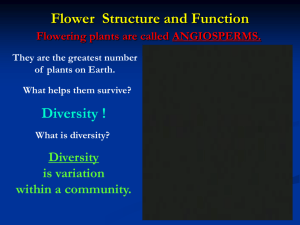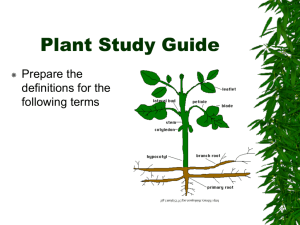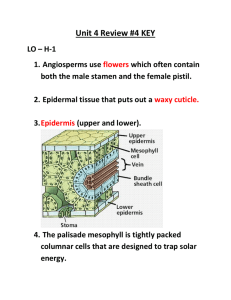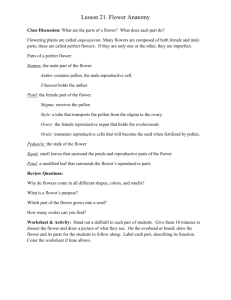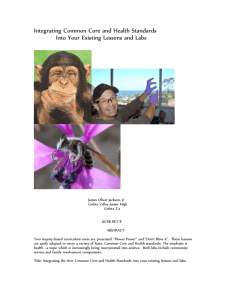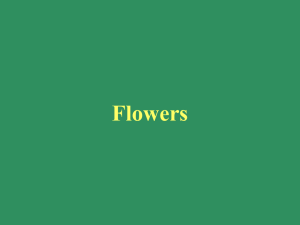SNC2D_01_11_Sexual_Reproduction_in_Angiosperms
advertisement
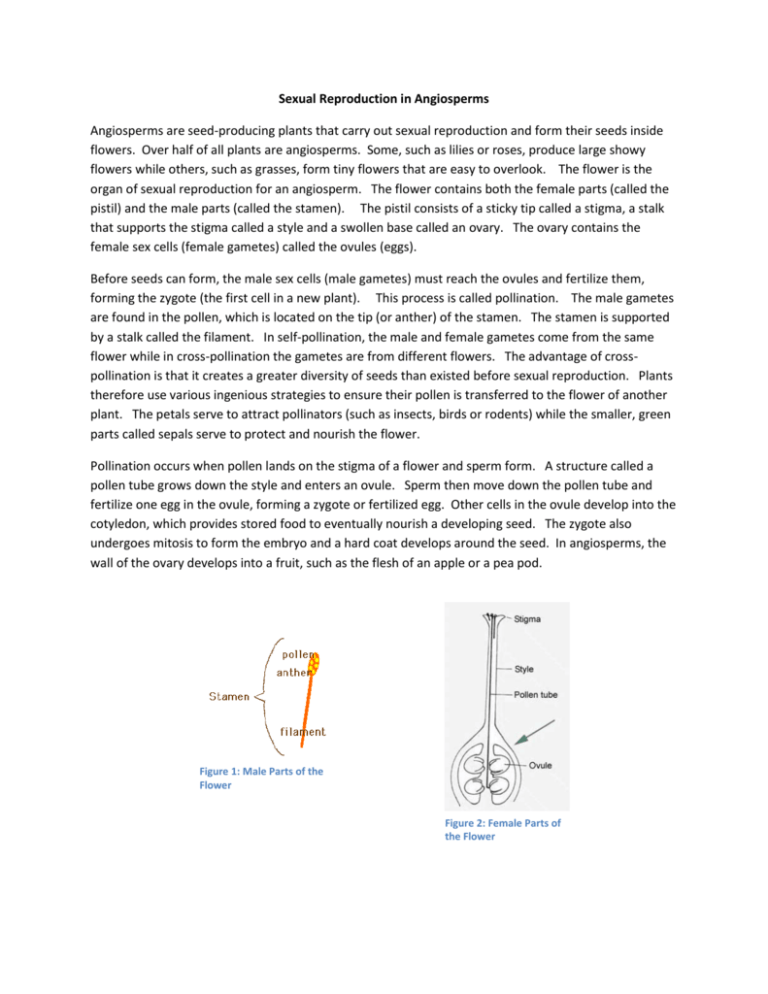
Sexual Reproduction in Angiosperms Angiosperms are seed-producing plants that carry out sexual reproduction and form their seeds inside flowers. Over half of all plants are angiosperms. Some, such as lilies or roses, produce large showy flowers while others, such as grasses, form tiny flowers that are easy to overlook. The flower is the organ of sexual reproduction for an angiosperm. The flower contains both the female parts (called the pistil) and the male parts (called the stamen). The pistil consists of a sticky tip called a stigma, a stalk that supports the stigma called a style and a swollen base called an ovary. The ovary contains the female sex cells (female gametes) called the ovules (eggs). Before seeds can form, the male sex cells (male gametes) must reach the ovules and fertilize them, forming the zygote (the first cell in a new plant). This process is called pollination. The male gametes are found in the pollen, which is located on the tip (or anther) of the stamen. The stamen is supported by a stalk called the filament. In self-pollination, the male and female gametes come from the same flower while in cross-pollination the gametes are from different flowers. The advantage of crosspollination is that it creates a greater diversity of seeds than existed before sexual reproduction. Plants therefore use various ingenious strategies to ensure their pollen is transferred to the flower of another plant. The petals serve to attract pollinators (such as insects, birds or rodents) while the smaller, green parts called sepals serve to protect and nourish the flower. Pollination occurs when pollen lands on the stigma of a flower and sperm form. A structure called a pollen tube grows down the style and enters an ovule. Sperm then move down the pollen tube and fertilize one egg in the ovule, forming a zygote or fertilized egg. Other cells in the ovule develop into the cotyledon, which provides stored food to eventually nourish a developing seed. The zygote also undergoes mitosis to form the embryo and a hard coat develops around the seed. In angiosperms, the wall of the ovary develops into a fruit, such as the flesh of an apple or a pea pod. Figure 1: Male Parts of the Flower Figure 2: Female Parts of the Flower



